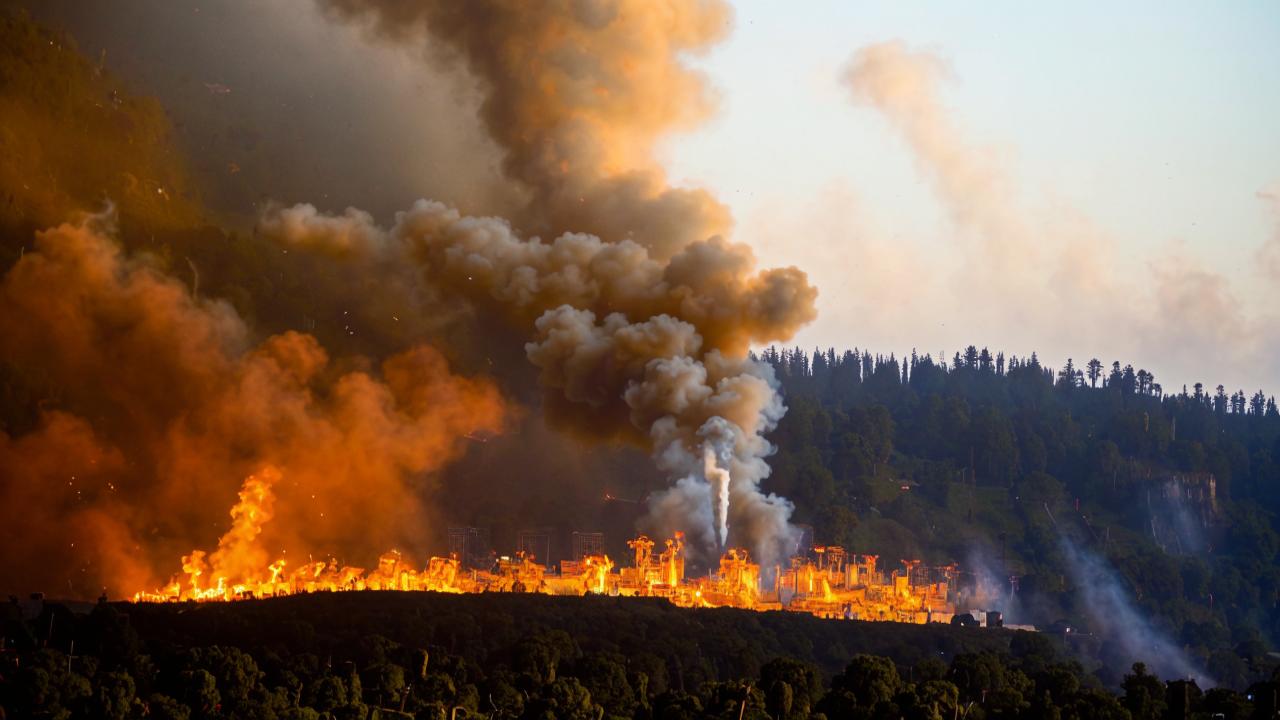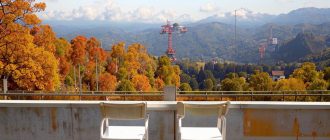In 2023, the most fire-prone regions of the country were named. In fact, the list remains relevant from year to year, and only the positions change depending on the area covered by fire.
Most fires occur in Siberia a Far East. Climatologists have conducted a number of studies to find out the reasons for the abnormal frequency of fires. Of course, human negligence and careless handling of fire play an important role. Despite the bans and fines for lighting fires, there are desperate daredevils who like to roast kebabs in nature. It is almost impossible to catch the culprit. One small spark is enough to ignite the grass dried by the merciless sun. The wind will do the rest.
However, scientists have deduced two more reasons for frequent fires. The first is global warming. The melting of ice in the Arctic zone of Russia not only affects fire behavior in Siberia and the Far East, but also affects North America and even Australia. In Australia in August 2019, fire scorched almost 20 million hectares! This became a real natural disaster and is considered one of the most devastating disasters of our century. People were forced to flee and abandon their homes – alas, not without casualties, 34 people died. But an even greater blow came to the flora and fauna of the Green Continent. More than a billion animals died in the fire.
The second cause of forest fires researchers call climate change, expressed in droughts, hurricanes, tornadoes and lightning. A lightning strike in a dry tree plus wind – and as a result, a blazing fire for several hectares.
In some regions of Russia even now the emergency regime has been declared. According to the data of FBU “Avialesokhrana”, this year several large fire centers were recorded.

Yakutia
Due to forest fires the other day here entered the emergency regime of a federal nature. According to the Ministry of Emergency Situations, the fire area already exceeds 330 thousand hectares, and more than a hundred blazing points have been recorded. Equipment and 1.5 thousand people were involved in the elimination of fires. The main cause of the disaster is called abnormally dry thunderstorms.
Transbaikal Territory
At the beginning of July 85 fires with a total area of about 200 thousand hectares were already recorded in the territory of the region. And the first fires shook Transbaikalia in spring. In May, the elements destroyed an entire dacha village, 30 houses were burned down, and hundreds of people were left homeless.
Recall, terrible forest fires in 2019, which shook the whole of Siberia, began exactly with the Transbaikal region. Then in late April, 17 villages and hamlets caught fire, the fire destroyed two hundred houses, people threw everything and fled. Dozens of people received burns, but it was a blessing that there were no casualties.

However, the raging flames spread further, covering Yakutia, Krasnoyarsk Krai, Irkutsk Oblast and Buryatia. To date, the Siberian fires of 2019 are considered the largest and most destructive. The tragedy forced a complete revision of the forest protection project and fire safety conditions. Initially, the causes were called, naturally, abnormal heat and drought. Then they added careless handling of fire, as evidenced by the bonfires left along the roads. And then the Investigative Committee got involved, which revealed that there had been deliberate arson. This was an attempt to conceal illegal deforestation, but they did not take into account the unpredictability of the elements.
The fires in Siberia lasted for several months, in some regions a state of emergency was introduced. By mid-summer, in July, the smoke reached major Siberian cities. Smoke from the fires even reached Alaska! By the end of the month, the fire was raging on 80 million hectares of Siberian land.
The situation was aggravating every day. Military aviation was brought to extinguish the fire, governments of other countries offered Russia their help. Only in August they managed to stop the spread of the fire. However, a week later the flames broke out again. In the second half of the month the fires began to subside. Nature itself also helped – the saving rains came to the rescue.
In September the elements gave up their positions. It was time to assess the consequences and damage. It turned out to be colossal. 200 tons of carbon dioxide and soot were emitted into the air, and it would take at least 100 years to restore the scorched fields and forests. The catastrophe not only had an ecological character, but also caused billions of dollars in losses – the damage was estimated at about 15 billion rubles.

Altai Territory
The picturesque region, famous for its natural beauty, is also among the fire-prone regions of Russia. In 2010 Altai was caught in a fire that destroyed several thousand hectares of forest. Experts were surprised that the fires swept the region not in the summer season, but in September.
Climatologists later explained this by the fact that despite the hot June, July turned out to be very rainy. But August made up for it. To the abnormal heat was added hurricane wind, which began to spread fire with lightning speed through the forests.
In September, the temperature stayed at 35°C – and not a hint of heavy rain. In just one week, 62 fires were recorded. Mikhailovsky, Kamensky, Zonal and Petropavlovsky districts suffered the most. Residents were evacuated urgently.

Sverdlovsk Region
In 2023, the Sverdlovsk region took the first place in the number of forest fires. The fire element is not new here. A year ago, a tragedy occurred in the village of Sosva due to human negligence and carelessness. A local wood processing company decided to save money and did not think of anything better than setting sawdust on fire. A strong gust of wind blew the fire dust around the neighborhood, and as a result, about 100 residential houses burned down.
The natural beauty of the region beckons tourists, but some are completely careless about fire safety rules. For example, in May last year a fire destroyed 20 hectares of forest in the park “Deer Ruchy” because of a campfire.
“The cause of the resulting fire was irresponsible, thoughtless behavior of rafting tourists. How many times we wrote, warned on the site, in social networks that all fires are strictly forbidden. But there are people who don’t care about laws. There is no rain, dry grass and vegetation all around, the heat is 26°C. But they managed to do it! And then they ran away from the scene. Even the kayak abandoned”, – such information appeared on the official page of the park in “VKontakte”.

Primorsky Krai
This year, rescuers have already extinguished 19 fires that broke out on the territory of 3500 hectares. Last year the south of Primorsky Krai suffered the most. The situation was complicated by the fact that the fire, driven by the wind, turned into a blazing tornado. However, firefighters managed to cut off the path to other settlements. Firefighters were also engaged in extinguishing the fire in the famous national park “Land of the Leopard”, here 400 hectares were affected, but the flames were eliminated quite quickly.
Krasnoyarsk region
Already this year, rescuers have worked to eliminate 14 forest fires. The worst damage was caused in 2022. Then the fire with a destructive wave passed through 60 settlements, destroying more than 500 houses. Eight people died in the villages of Talazhanka, Nikolsk, Kurai, the town of Zaozerny and the village of Ashpatsk. The administration of the region put forward a version that the cause of the disaster was the breakage of power grids by hurricane wind.

In which regions is the state of emergency imposed?
- In the Republic of Sakha (Yakutia).
- In the Republic of Tyva.
- In the Amur region.
- In the Trans-Baikal Territory.
- In the Bodaybinsky district of the Irkutsk region.
- In the Bauntovsky Evenki and Muisky districts of the Republic of Buryatia.
- Bilibinskiy Rayon, Chukotka Autonomous Okrug.
- In the Yenisei, North Yenisei and Turukhansk districts of the Krasnoyarsk Territory.
In 52 regions a special firefighting regime has been introduced. Its violation is punishable by a fine from 10 to 800 thousand rubles.






